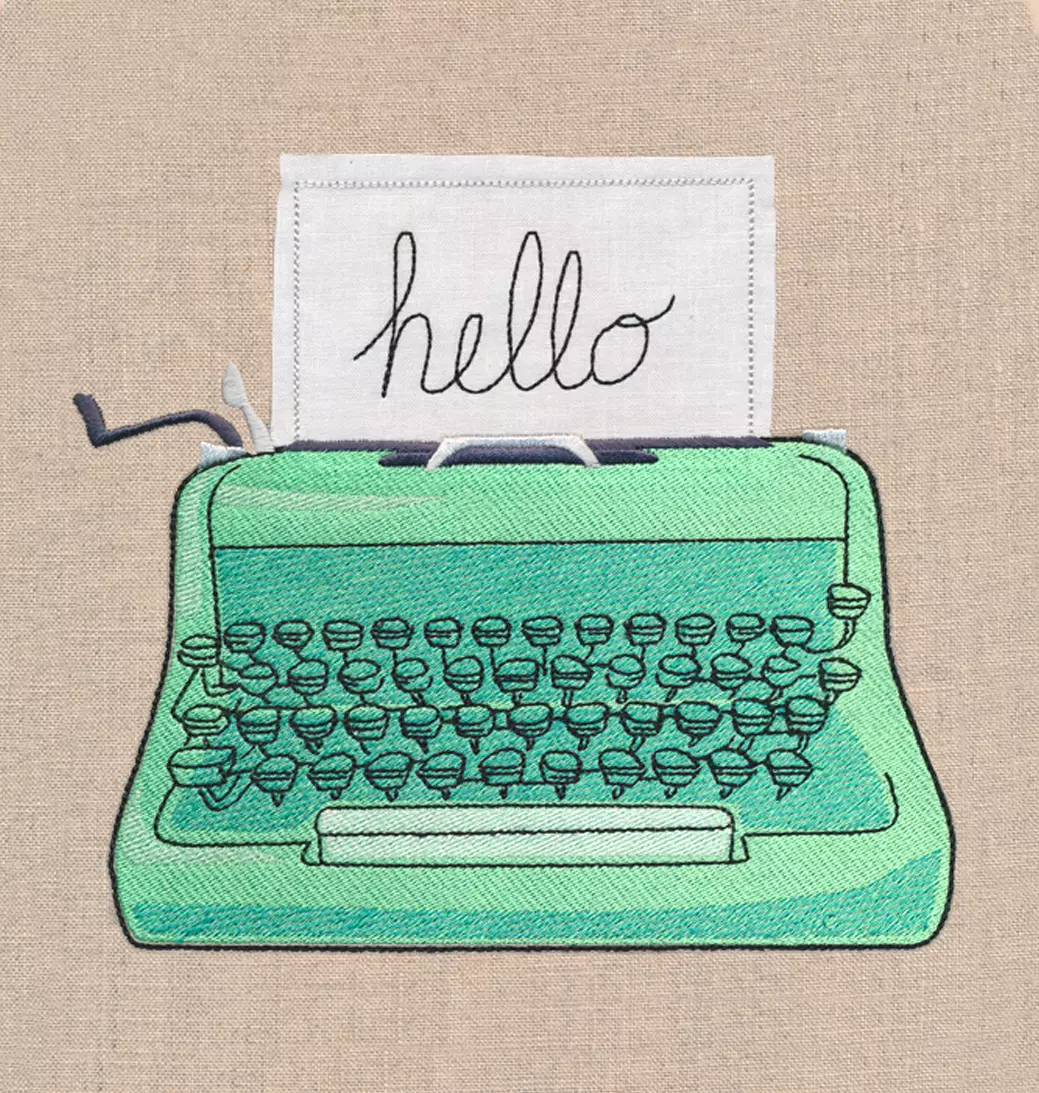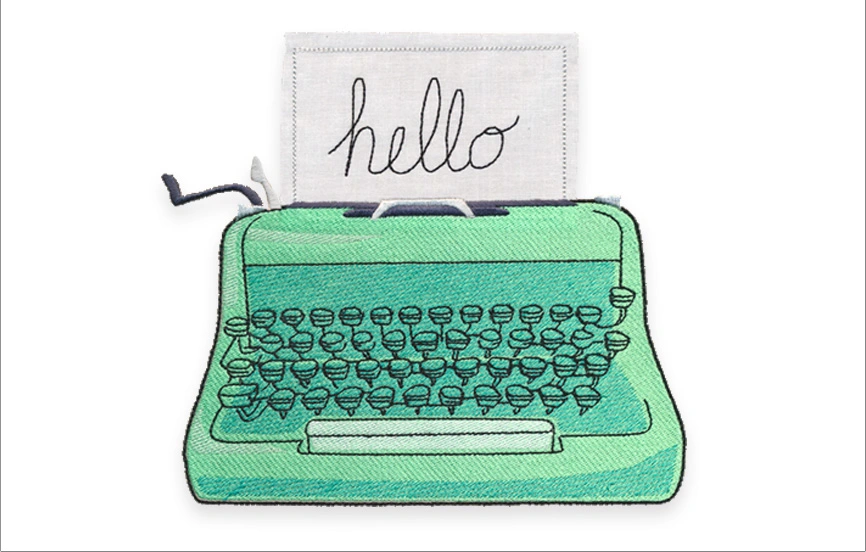Scarves are all the rage these days, and infinity scarves even more so. I know, because I own one, which in my elevated opinion means they must be in vogue. Right? Just go with me on this.
Infinity scarves are basically scarves that are just one big long loop, which makes them a breeze to make yourself. The fun then comes in adding embroidery and texture to really give your scarf that edge. I say there’s no better way to be edgy than to combine the soft and elegant texture of lace with a delicate but dark embroidery design.
Plus, if you have the right hoop, this is a great time to pull out a great big design. Even if it means some of it will get lost in the scarf! Let your embroidery be more than a “sticker”. Let it loop and fold into the texture. It’s a gorgeous but subtle way to let it shine.
Supplies
To make an infinity scarf, you’ll need:
- Scarf fabric 1 1/2 yards long, and at least 14 inches wide
- Lace of the same length, at least 7 inches wide. You’ll want to use lace that has a finished, decorative edge.
- Sheer mesh cutaway stabilizer, like Floriani No Show Mesh or Sulky Soft 'n' Sheer
- Light-stitching embroidery design
- Scissors and pins
- Invisible thread (optional, and not pictured because, because, uh, it’s invisible. Yeah.)
Designs Used
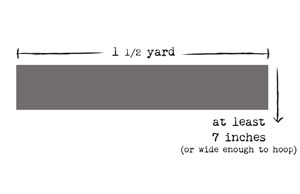
Let’s start with the piece we need to embroider. You’ll want one long strip 1 1/2 yards long, and 7 inches wide, or wider depending on your hoop size. Hoop up your design about 6 inches up from one end. Or, anywhere really.
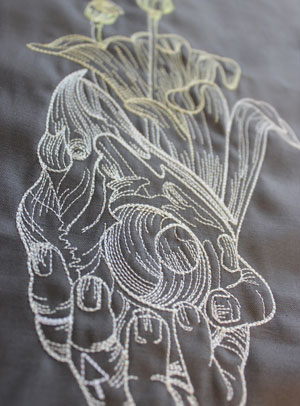
Designs for a draping scarf like this are best kept light, but as you can see, they can be pretty big if you’d like a nice, bold statement.
I used the largest size of the beautiful guest artist design from Meg Adamson, and changed the colors to reflect a soft, gradual shift from white to pale yellow. Because if there isn't something great about lace, pastels and skulls. It will be so in this season, just you wait.
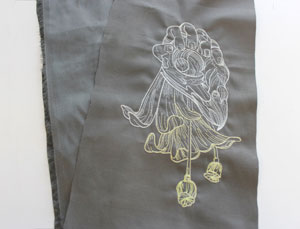
Once your design is done, you can trim of the excess width down to 7 inches, or keep it if you want a wider scarf. Be sure you have enough of the fabric left to make another strip the same size.
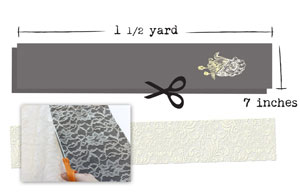
Cut your second piece of grey fabric to match, and cut a long piece of lace the same size. Don’t worry right now about using the decorative edge, that comes later.
If you're wondering about the double layer of grey, it's because the lace won’t be enough to cover the back of our embroidery on it's own. If you happen to be doing this without embroidery, you can skip that step. As a next step, I highly advise you get into embroidery. Posthaste.
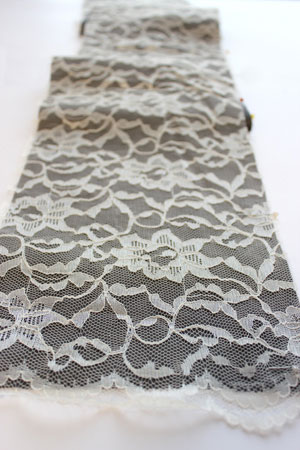
With your design facing up, place your strip of lace on top of it, taking care to line up the edges. If your lace has a right side, it should be facing down.
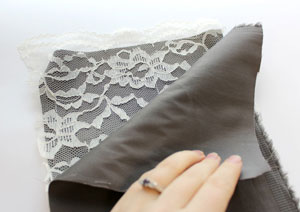
Next, place your other strip of scarf fabric on top, also right side down. Pin through all three layers along the edges to keep everything in place.
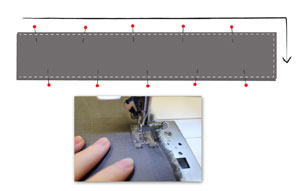
Sew a seam around three sides of your scarf, like shown. Easy peasy.
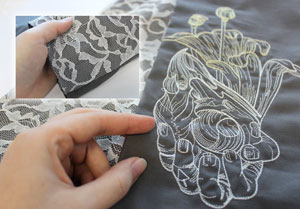
Through the open end, turn your scarf right side out again. Take care to turn it right side out through the embroidered and the lace layers, to assure the right pieces come out on top.
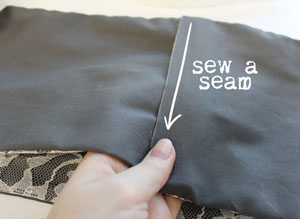
Ordinarily, we would need to find a sneaky way to sew these two seams together, but we’ve got a little camouflage trick up our sleeve, so the end just needs to be secure. I call this trick a "design element". More seasoned veterans of my tutorials might recognize this as what is sometimes referred to as "laziness." Often I find that they're one and the same.
Tuck one end of your scarf inside the other, and sew a seam across them to secure your scarf in a loop. No, that's not the design element part. I have some standards.
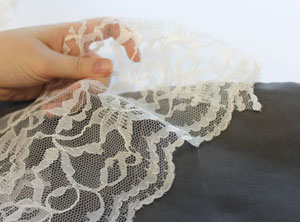
Ready for it? It's time for that decorative lace edge to come in handy. We’re going to add a stylish lace band across our scarf, to hide our seam and pull in a great accent to the back. Am I design savvy or what.
Cut a piece of lace that’s about 14 inches long (or twice the width of your scarf) and about 6 or so inches wide.
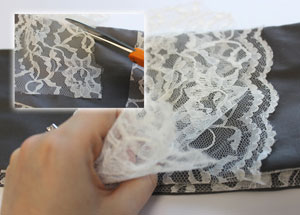
Placing it over the seam, wrap your lace around your scarf with the decorative edge facing out.
Now cut another piece of edged lace the same size. We’re going to wrap this around our scarf with the lace edging facing the opposite direction. To hide where the two lace pieces meet, I trimmed the top piece of lace around the edges of the patterns. This way, your lace will blend more seamlessly into the other.
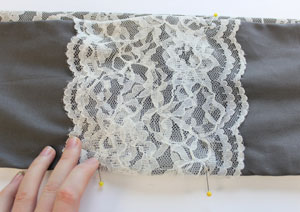
Wrap and pin them both in place. Take care to see that the ends of the lace are meeting together at the back of the scarf in a way you’re happy with before you move on to the next step.
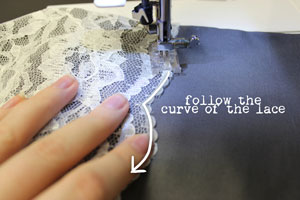
To stitch your lace down, either choose thread that matches your lace color (thread and bobbin) or use invisible thread, or as I like to call it, Ninja Thread. It gets the job done by being all sneaky-like.
To best hide your stitches, sew along the thickest part of the lace. I followed the thick scalloped edge along one side. Classic ninja trick. Well no, probably not. But it would be if they were in the habit of constructing handmade scarves.
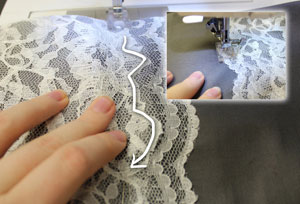
To secure the raw edge of your top lace piece, you’ll do the same thing, though it may be a little more erratic given the shapes you cut. Stitch as close to the edge as you can to keep it secure, and follow the shapes through the thickest part of the lace.
Finally, sew the other scalloped side down. Your stitches should have secured your lace at both the back and the front. You’re done!
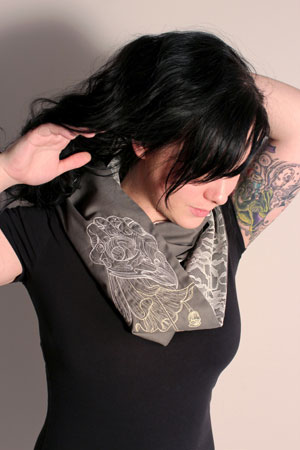
Wear your scarf long, or double loop it to show off your design.
Modern and edgy, yet delicate and traditional, your scarf can blend the line between both. Anything that can pull of both skulls and pastels probably has you covered for any occasion.
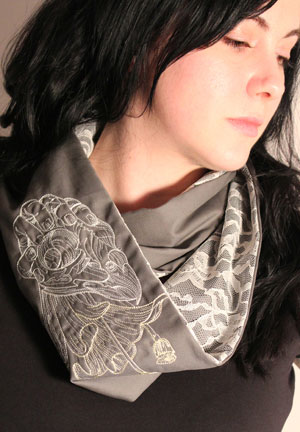
A large piece of embroidery makes the perfect texture complement to the lace, but smaller designs will work just as well.
Just remember, your embroidery doesn’t always have to shout out loud, or be always and forever in full view. Let it blend, fold and sink into texture.
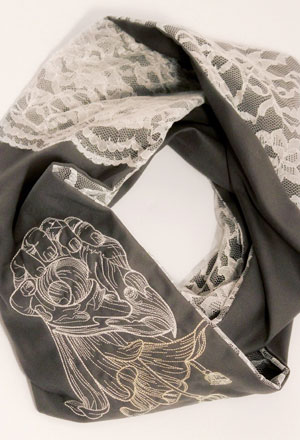
Trust me, your stitches will still get noticed.

